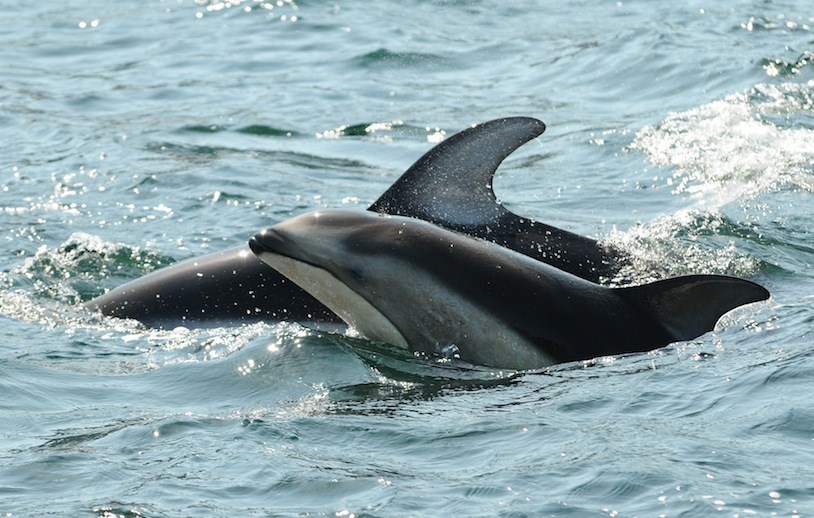Jessica Torode, coordinator of the BC Cetacean Sightings Network, helped Bowen Islanders deepen their knowledge of the cetacean population on the weekend with a presentation at Collins Hall on Saturday.
Attendees at the event learned the identifying features of the 8 most common cetacean species found in the coastal waters of British Columbia (harbour porpoise, dall’s porpoise, Pacific white-sided dolphins, killer whales, minke whales, grey whales, humpback whales, and fin whales), and learned about the species more specific to Howe Sound and the Straight of Georgia.
“We’ve only had five sightings of Pacific white-sided dolphins in Howe Sound in 2017,” said Torode. “There was a real spike of sightings in 2010, which may have been due to a slight increase in herring numbers in Howe Sound during that time.”
Humpbacks have made a remarkable recovery since commercial whaling decimated the population in the early 1900s. Their return to Howe Sound is likely due to the restoration of forage fish habitat in the past decade. However, Torode says increased human activity and plans for industrial development in the area are concerning. Humpbacks are the most commonly struck cetacean in BC, due to their unpredictable surfacing behaviour and their tendency to feed and rest at the surface of the water.
“More vessel traffic in the area could put these animals at risk for death or injury due to ship strike,” says Torode. “It’s very important for boaters to remember-See A Blow, Go Slow!”
Researchers along the coast are continuing to monitor humpback populations, but unfortunately, there are very few positive ids on Bowen’s local humpbacks.
“We don’t have enough fluke photos of the humpbacks that frequent Howe Sound,” says Torode. “It is tricky to get the photos we need. In order to get an identification photo, you need to take a photo of the unique scarring and pigmentation on the underside of a humpback’s tail fluke-so it’s a matter of being in the right place at the right time, and at the right angle.”
Torode encourages anyone who spends time on the water and has a tele-photo lens to send their pictures into the Sightings Network, especially if you can get a good identification photo. For humpbacks, that would be the underside of the tail fluke right before a dive. For killer whales, it would be the whale’s left side, their saddle patch and dorsal fin. These photos contribute to identification catalogues and help researchers monitor the habitat use and life histories of cetaceans in our local waters.
In 2016, there were 103 reported sightings of killer whales in Howe Sound. Most of the confirmed sightings are of Transients, otherwise known as Bigg’s, and they’re here for the seals.
“More than 50 percent of their diet is harbour seals,” says Torode about the local population of Bigg’s killer whales.
When you spot one in Howe Sound, it may well be a member of the T123 matri-line, made up of a male known as T123A (“Stanley”), who was born in the year 2000, his sister and his mom. Five confirmed sightings of these whales were reported in Howe Sound this summer, including one sighting that turned into a viral video.
In April, a boater named Elliot Funt was on the water near Bowyer Island caught footage of orcas hunting a sea-lion, which eventually used the boat next to his as a shield. After the killer whales gave up the chase, the boat drove close to land, giving the sea-lion a chance to escape.
Torode says incidents like this are increasingly common.
“A similar incident occurred with kayakers caught in the middle of a group of Bigg’s killer whales hunting a harbour seal,” she says. “One of the killer whales almost breached on top of the kayakers, so obviously it can be very dangerous to humans. It is also detrimental to the whales, because they are expending all this energy and might not end up getting the food they need.”
Of course, she adds, there might not be much you can do once a seal is using your boat as a shield – beyond keeping an appropriate distance from whales in the first place. As of this spring, new whale-wise regulations will require boaters to stay at least 200 metres from killer whales.
To report your whale sightings, use the WhaleReport app, send an email or call 1-866-I-SAW-ONE (1-866-472-9663). Go to wildwhales.org to download the app and to find out more.



